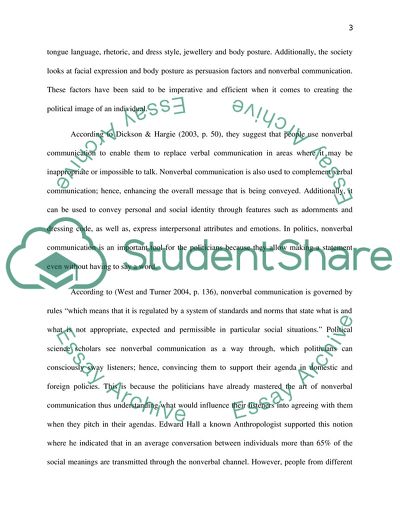Cite this document
(Nonverbal Communication in Politics Literature review Example | Topics and Well Written Essays - 2250 words, n.d.)
Nonverbal Communication in Politics Literature review Example | Topics and Well Written Essays - 2250 words. https://studentshare.org/journalism-communication/1858372-nonverbal-communication-in-politics
Nonverbal Communication in Politics Literature review Example | Topics and Well Written Essays - 2250 words. https://studentshare.org/journalism-communication/1858372-nonverbal-communication-in-politics
(Nonverbal Communication in Politics Literature Review Example | Topics and Well Written Essays - 2250 Words)
Nonverbal Communication in Politics Literature Review Example | Topics and Well Written Essays - 2250 Words. https://studentshare.org/journalism-communication/1858372-nonverbal-communication-in-politics.
Nonverbal Communication in Politics Literature Review Example | Topics and Well Written Essays - 2250 Words. https://studentshare.org/journalism-communication/1858372-nonverbal-communication-in-politics.
“Nonverbal Communication in Politics Literature Review Example | Topics and Well Written Essays - 2250 Words”. https://studentshare.org/journalism-communication/1858372-nonverbal-communication-in-politics.


